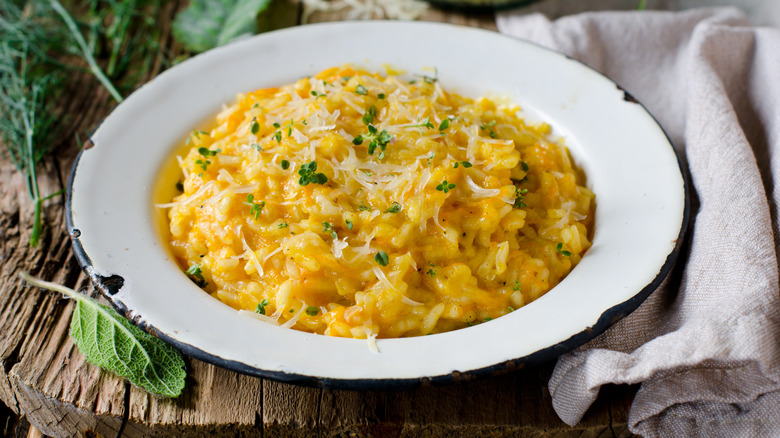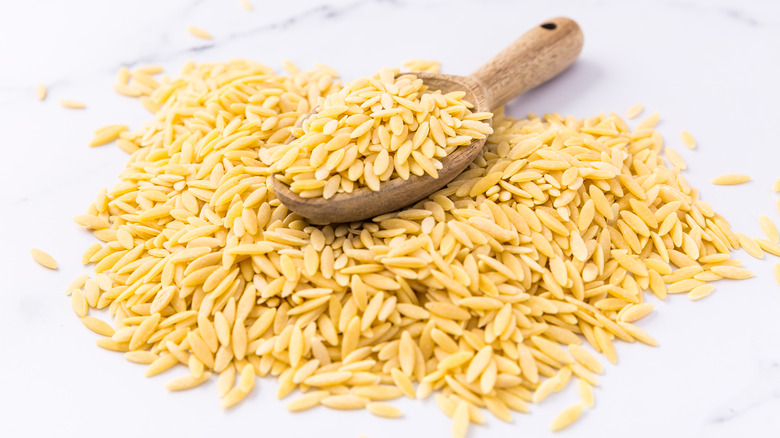Transform Risotto By Swapping The Main Ingredient With Orzo
Traditional risotto recipes are well worth the tediousness of methodically adding small ladlefuls of liquid while repeatedly stirring rice. However, you can achieve equally luxurious risotto with a fraction of the effort by substituting rice for orzo.
Often described as rice-shaped pasta, orzo is easily mistaken for short-grain arborio rice, which is the conventional ingredient in risotto. Orzo is, in fact, a classic Italian semolina-based pasta. But its neutral flavor and an al-dente texture do mirror rice. You can swap arborio rice for the same amount of orzo in any risotto recipe without changing any other ingredients. The only thing that changes is the interminably long cooking process.
Because, when it comes to adding the cooking liquid, you'll treat the orzo like pasta, pouring in the broth or water all at once. Then it simmers, while you stir, uncovered, for just five to eight minutes. Orzo will release its starches into the cooking water while also absorbing most of it, resulting in a decadently creamy risotto.
Precise proportions of liquid to pasta are more important for orzo risotto than most other pasta dishes where you can simply strain excess water. Recipes do vary, but on average they suggest about a one-to-three ratio of pasta to liquid. Just don't add too much, so that the orzo absorbs the liquid without overcooking. You can always add a splash more if it's too dry.
Tips for orzo risotto
Because orzo is a veritable doppelganger for rice, many of the same tips that apply to rice also apply to orzo. The first tip is to fry uncooked orzo with oil and aromatics like shallots, onion, or garlic. Frying orzo will crisp it, bring out a toasty fragrance, and instill earthy, savory, and caramelized notes from the oil and aromatics. Orzo should take on a golden brown hue before you add white wine.
White wine is a crucial ingredient that helps define risotto's depth of flavor, and a dry, drinkable white wine is optimal. You'll need to stir the orzo and wine constantly for a minute until the wine evaporates. Just as you add warmed broth to a traditional risotto, you'll also want to heat the cooking liquid you add to the orzo. This will speed up the cooking time and ensure that the orzo doesn't overcook while the liquid heats up. While you still have to stir constantly, orzo will cook and absorb the liquid in less than ten minutes, a fraction of the time it takes to cook rice.
Instead of adding cream at the end of the cooking process, you can use it with broth as the cooking liquid. A ratio of about six parts broth to one part cream will yield creamy and al dente orzo risotto. Depending on your recipe, stir in parmesan, manchego, cheddar, or goat cheese at the end for a salty element and extra velvety consistency.

